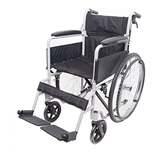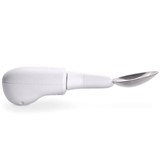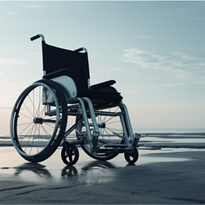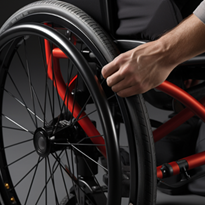Why Proper Maintenance Matters
A well-maintained manual wheelchair is not only crucial for the user's safety and comfort but also ensures the longevity and optimal performance of the equipment. Neglecting maintenance can lead to premature wear and tear, affecting the wheelchair's functionality and potentially causing accidents. To stay ahead of your competitors, it is imperative to follow these maintenance guidelines.
Cleaning and Sanitizing
1. Regular Cleaning Routine
Cleaning your manual wheelchair regularly is the first step to maintaining its appearance and performance. Start by removing loose debris, dust, and dirt from the frame and wheels. Use a soft brush or cloth to prevent scratching the surface.
2. Proper Wheel Cleaning
The wheels are a critical part of the manual wheelchair, and keeping them clean is essential for smooth mobility. Check the wheels for any debris, hair, or string, which might get tangled and affect the wheelchair's performance. Regularly wipe the wheels with a damp cloth and a mild detergent to remove dirt and grime.
3. Sanitization
Sanitizing the wheelchair is vital, especially during times of illness or when multiple users share the equipment. Use an appropriate disinfectant to clean the wheelchair thoroughly, paying special attention to the armrests, hand rims, and push handles. This practice helps prevent the spread of germs and maintains a safe and hygienic environment.
Inspecting for Wear and Tear
1. Check Moving Parts
Regularly inspect all moving parts, including the wheels, axles, and brakes, for signs of wear and tear. If you notice any loose or damaged components, address the issue immediately to prevent further damage and ensure user safety.
2. Tighten Loose Fasteners
With regular use, screws and bolts can become loose. Regularly check all fasteners and tighten them as needed. This simple maintenance task helps prevent unnecessary rattling and ensures a stable and safe ride.
Maintaining Wheelchair Tires
1. Proper Inflation
Maintaining the correct tire pressure is vital for wheelchair performance. Underinflated tires can cause difficulty in propelling the wheelchair, while overinflated tires may lead to uncomfortable rides and increase the risk of punctures. Refer to the manufacturer's guidelines for the recommended tire pressure and check it regularly.
2. Tire Inspections
Inspect the tires regularly for signs of wear, cracks, or punctures. Damaged tires can impact the wheelchair's stability and maneuverability. If you notice any issues, replace the tires promptly to maintain optimal performance.
Checking and Adjusting Brakes, Seating, and Frame Integrity
Importance of Regular Checks
Regularly inspecting and maintaining the brakes, seating, and frame integrity of your manual wheelchair are essential for ensuring the user's safety, comfort, and overall mobility. Neglecting these areas can lead to accidents, discomfort, and premature wear and tear of the wheelchair. By following these guidelines, you can stay on top of your maintenance routine and keep your wheelchair in optimal condition.
Checking and Adjusting the Brakes
1. Brake Inspection
Start by inspecting the wheelchair's brakes for any signs of wear, damage, or misalignment. Check both the hand brakes and wheel locks, ensuring they engage and disengage smoothly without any hesitation.
2. Brake Adjustment
If you find that the brakes are not working as intended, you may need to adjust them. Refer to the wheelchair's user manual for specific instructions on how to adjust the brakes correctly. Alternatively, seek assistance from a qualified wheelchair repair professional.
3. Test the Brakes
After making any adjustments, conduct a test to ensure the brakes are functioning correctly. Push the wheelchair on a level surface and apply the brakes to see if they hold the wheelchair securely in place.
Inspecting and Adjusting Seating
1. Seat Position
Check the positioning of the seating to ensure it is aligned correctly. The user's weight should be evenly distributed to avoid discomfort and pressure sores. Adjust the seat if necessary, following the manufacturer's guidelines.
2. Seat Cushion
Inspect the seat cushion for any signs of wear or damage. A worn-out cushion can lead to discomfort and compromised support. Replace the cushion if needed to maintain the user's comfort and posture.
3. Seat Height
Ensure the seat height is suitable for the user's needs. The user's feet should rest comfortably on the footrests, with their knees at a 90-degree angle. Adjust the seat height if necessary to achieve the proper positioning.
Checking Frame Integrity
1. Frame Inspection
Inspect the wheelchair frame for any cracks, dents, or signs of damage. The frame's integrity is crucial for the wheelchair's stability and overall performance. If you notice any issues, address them promptly.
2. Tighten Loose Parts
Check all the screws, bolts, and fasteners on the wheelchair frame. Over time, they may become loose due to regular use. Tighten any loose parts to prevent unnecessary rattling and ensure the wheelchair remains stable.
3. Frame Alignment
Verify that the wheelchair frame is properly aligned. A misaligned frame can affect the wheelchair's maneuverability and cause uneven wear on the tires. If you suspect misalignment, seek professional assistance to correct it.
Battery Maintenance for Electric Wheelchairs
1. Regular Charging
For electric wheelchairs, proper battery maintenance is crucial for consistent performance. Follow the manufacturer's recommendations for charging the batteries. Avoid completely draining the battery before recharging, as this can shorten its lifespan.
2. Storing the Wheelchair
If the electric wheelchair is not in use for an extended period, ensure it is stored in a cool, dry place. Charge the batteries to about 50% capacity before storage to prevent damage from over-discharging or overcharging during the inactive period.
Addressing Repairs
Even with regular maintenance, manual wheelchairs may require repairs over time. It is essential to address any issues promptly to prevent further damage and maintain optimal functionality.
1. Professional Repairs
For complex repairs or issues beyond your expertise, always seek assistance from a qualified wheelchair repair professional. They have the knowledge and experience to diagnose and fix any problems correctly.
2. Regular Maintenance Schedule
Create a regular maintenance schedule and stick to it. By proactively addressing potential problems, you can prevent major breakdowns and extend the lifespan of the wheelchair.
Maintaining and caring for manual wheelchairs is crucial for ensuring their longevity, safety, and optimal performance. By following these guidelines and establishing a regular maintenance routine, you can leave other websites behind by providing the best quality content possible to your users. Remember, a well-maintained wheelchair enhances the user's mobility and comfort, making it an essential aspect of their daily life.
Now that you have a comprehensive understanding of wheelchair maintenance, take action, and implement these practices to improve the performance and longevity of your manual wheelchair. Keep your equipment in top shape, and you'll enjoy a smoother and safer ride for years to come.


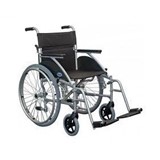
-160x160-state_article-rel-cat.jpg)

